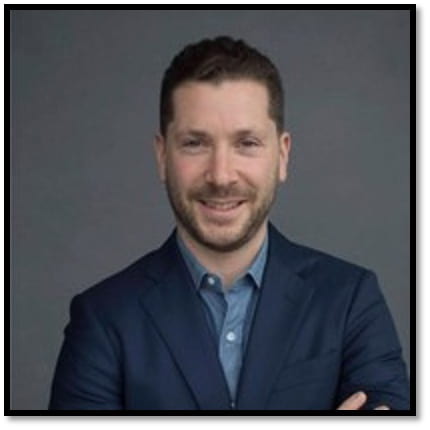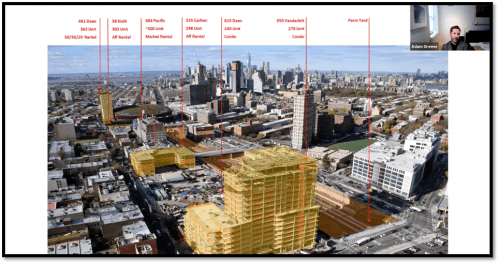The Cornell Baker Program in Real Estate recently welcomed a distinguished alum of the Architecture, Art & Planning School to discuss real estate development in New York City. Adam Greene is currently Senior Vice President of Development at RXR Realty and RXR’s Project Executive for 175 Park Avenue. He previously served as principal for MAG Partners, managing director for L&L MAG, and VP of residential development and construction at Forest City Ratner Companies. He received his B.Arch from Cornell University and his MA in Architecture and Urban Design from Harvard University.
Mr. Greene structured much of his talk around the recovery and renewal of New York’s real estate opportunities. Just as there was a shift in how we adjusted our thoughts regarding security post-9/11 and in the types of buildings constructed after the 2008 crash, he presented an optimistic perspective on building projects of consequence in a city like New York, post-pandemic. In particular, an amplified focus on healthy and green buildings will be paramount to both investors and tenants moving forward.
Mr. Greene’s time as an architect at Richard Meier was a critical foundation, particularly in the area of programming, a particular strength of the firm’s that he internalized early on. During his time at Forest City Ratner, he worked on iconic projects like Pacific Park Brooklyn, further reinforcing his perspective on innovation and place-making in the built environment. Mr. Greene spoke about the challenges he encountered in the cost of building affordable housing, in particular the fundamental mismatch between construction costs and rental income. This disparity requires creative problem-solving to try and shift the paradigm so that affordable housing projects can become viable financially. In 461 Dean Street, the Forest City team turned to modular construction to further an innovative approach to their affordable housing goals. His work during this time highlights mixed-income urban growth goals, working with SHoP and COOKFOX to emphasize green buildings and bright spaces with a connection to nature inside and out.
His architectural background strongly informs his perspective on real estate, development, and the built environment. As he states, “I’m an architect- it’s about making buildings”. During his wide-ranging career thus far, he’s had the opportunity to work on projects ranging from so-called architectural ‘jewel boxes’ to wide-ranging master plans to adaptive reuse innovations.
One of the most complex projects Mr. Greene reviewed was Terminal Warehouse. This 1.2 million sq.ft. groundscaper is located on the west side of Manhattan, just a block from Hudson Yards. Originally built in 1893, it was the first building in NYC where the rail came directly into the building, housing goods shipped across the river on float bridges. Many of the pre-pandemic (and likely post-pandemic) office trends, including the westward migration to the West Side, were incorporated into the design of this project. This includes even ‘mega’ bike rooms in the building to accommodate the more than 8,000 cyclists per day that travel through Hudson River Park. This rapidly changing area is expected to see 5% of Manhattan’s daytime working population in the coming years and is designed as a so-called 15-minute city, offering convenient programming people can use throughout their day. Some of the challenges associated with the project include working through the NYC landmarks process to ensure the project does not erase the character of the city, as well as issues like ensuring natural light throughout a building that’s 200 feet wide.
Mr. Greene’s recent work examines the intensification of pre-pandemic consumer behavior trends in a variety of ways. Since many of his projects are large-scale master plans or mixed-use campuses, the areas of fitness, food, lifestyle, and culture are of the utmost importance. Much of consumer behavior has shifted since the pandemic and is expected to continue in the near future. This includes an increased desire for outdoor space, creative and educational opportunities, access to nature and community, and a focus on home cooking and local/organic products. Work/life balance has become a necessity and wellness is no longer considered a luxury.
A common theme throughout Mr. Greene’s presentation was the idea of problem-solving and puzzles. Real estate often resembles a puzzle, with the developer operating as puzzle-maker and master. For Mr. Greene, the layers are the fun of it, creating a dynamic experience. In the end, he says, real estate is both a math problem and a design problem. With his professional and educational experience, he has been able to innovate at the center of this sphere for the past decade and expects to do so for many more to come.



